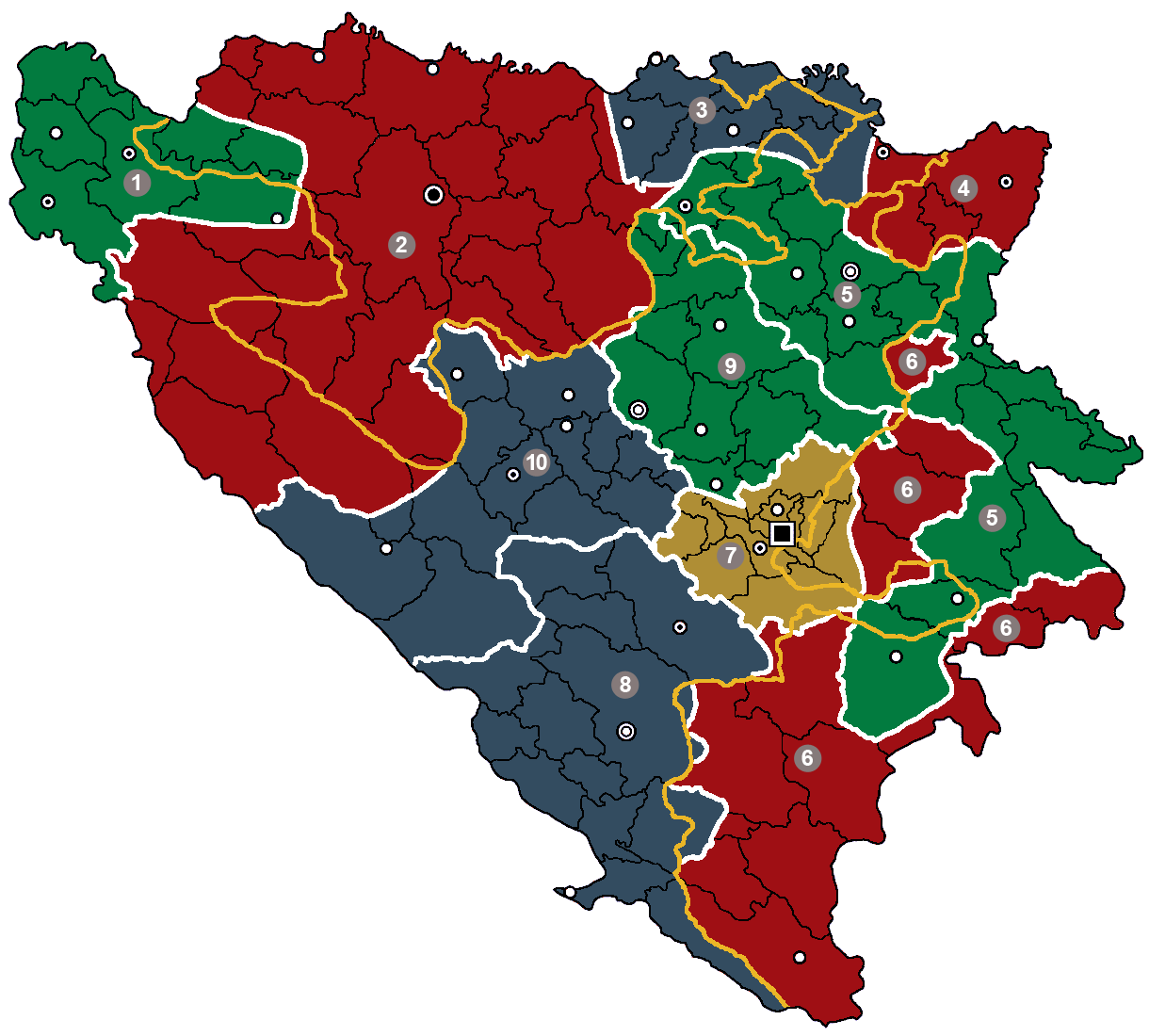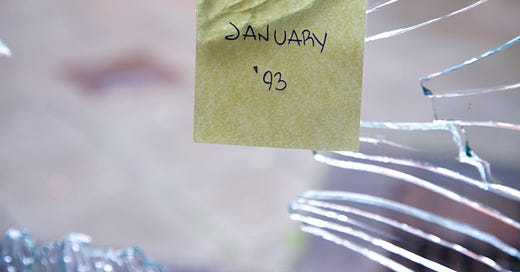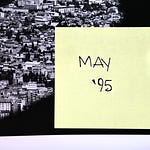January 1993.
The United States warned Serbia that the consequence of violent and extremist hegemony in Kosovo will be a direct military intervention [you can listen to the latest episode of BarBalkans - Podcast here].
The presidential elections in Serbia confirmed the leadership of Slobodan Milošević, while the Prime Minister of the Federal Republic of Yugoslavia, Milan Panić - just defeated - is also impeached by the Federal Parliament.
On the international scene, Serbian nationalists search and find the support of the communist and imperialist forces in Russia, exacerbating the idea that they are alone against the world.
With the new year, the international community tries to seize a new opportunity through diplomacy.
The Vance-Owen Plan
After months of negotiations, on January 2 a plenary session of the International Conference on the former Yugoslavia is held in Geneva, and for the first time with the presence of all representatives of the warring parties in Bosnia and Herzegovina.
The military and political leaders of Republika Sprska, the Croatian Republic of Herzeg-Bosnia and the government of the Republic of Bosnia and Herzegovina.
Only the newly-elected Serbian President Milošević is missing during the presentation of the Vance-Owen Plan, the new peace plan signed by the European Community negotiator for the former Yugoslavia, David Owen, and the UN Special Envoy to Bosnia, Cyrus Vance (and author of the Vance Plan for Croatia in December 1991).
The final version of the Vance-Owen Plan assumes that there is no solution other than a decentralized State, for three reasons:
Three separate States would cause ethnic cleansing and forced deportations;
A confederation of States would be unstable, because the Serbian and Croatian components would immediately strengthen ties respectively with Belgrade and Zagreb;
A centralized State would not be acceptable to at least two ethnic components (again, Serbs and Croats of Bosnia).

The Vance-Owen Plan is a 20-page dossier, divided into three sections:
the constitutional principles;
the military program, with an unconditional ceasefire monitored by the United Nations;
the map for the geographical organization of the new Bosnia and Herzegovina.
The constitutional draft recognizes the existence of 3 constituent peoples (Serbs, Croats and Bosniaks). Each of them has the ethnic majority in 3 provinces (out of 10). The Sarajevo district has a special status.
The national Constitution can only be modified unanimously by the three constituent peoples.
The central government consists of 9 members (three from each constituent people), while each province is ruled by its own unicameral Assembly and has its own police force. The provinces have legislative and judicial powers, but foreign policy and defense are responsibility of the central government.
The United Nations and the European Community are responsible for the respect of external borders and, internally, of the so-called “blue roads” (that ensure free movement of goods and humanitarian aid)

Overall, Bosniaks would control 32.3% of the territory, Serbs of Bosnia 42.3% and Croats of Bosnia 24.5%.
Bosnian Croats authorities, who would receive the smaller part of the territory, are the only ones satisfied by the Vance-Owen Plan.
Three provinces with common borders with Croatia - two in Western Herzegovina and one in Posavina - are assigned to the President of the Croatian Republic of Herzeg-Bosnia, Mate Boban.
The President of Republika Srpska, Radovan Karadžić, is furious. And only Milošević - economically and militarily threatened by the international community - is able to push for the approval of the Peace Plan by the Bosnian Serb Parliament.
By accepting the new Plan, almost a quarter of the territory conquered in nine months of war would have to be abandoned and the dream of Greater Serbia would fade away. Two out of three provinces would be separated from Serbia.
Also the President of the Republic of Bosnia and Herzegovina, Alija Izetbegović, is disappointed. He considers the Vance-Owen Plan a betrayal of the principles sanctioned by the London Conference for a united, sovereign and democratic State.
Moreover, Bosniaks would remain isolated among two ethnic peoples that have conquered the territory of the Republic with military force and who would be granted amnesty (in particular Serbs of Bosnia).

But the Vance-Owen Plan also finds the opposition of international public opinion, particularly in Germany.
The two diplomats are criticized for implicitly sanctioning ethnic cleansing in Bosnia, for not foreseeing any coercive force and for not taking into account the 20% of the population that did not recognize themselves in any of the three “constituent peoples” in the general elections of 1990.
The Geneva Conference resumes on January 23. In the general chaos, the three Bosnian delegations do not sign the Plan.
The plenary session on January 30 brings an inconclusive month of negotiations to an end. Vance and Owen fly to Washington, hoping that at least the new US government led by Bill Clinton will support the Peace Plan.

The resumption of hostilities
At the same time as the unsuccessful diplomatic efforts in Geneva, fighting intensifies both in Bosnia and Herzegovina and in Croatia.
At the beginning of January, the Bosnian army reorganizes in the Drina valley (in Eastern Bosnia) under the leadership of police officer Naser Orić, following the ethnic cleansing by Bosnian Serbs in Srebrenica and other cities.
On January 7, Orić’ forces attack the town of Kravica and massacre 40 civilians. A few days later the same happens in Skelani. From there, the Bosnian forces bomb the right bank of the Drina, which is Federal Republic of Yugoslavia’s territory.
The authorities in Belgrade fear that the “Bosniak jihad” might spread to the neighboring region of The Sandjak. This is why the Serbian reaction is extremely violent.
The entire Yugoslav military arsenal - including napalm bombs - is deployed in support to the commander of the Army of Republika Srpska, Ratko Mladić, to push Orić’ forces back.
The towns on the left bank of the Drina are once again under siege.
Meanwhile, an atrocious episode takes place in Sarajevo, definitively discrediting the role of the United Nations Protection Force (UNPROFOR) in the eyes of Bosniaks.
On January 8, the Bosnian deputy Prime Minister, Hakija Turajlić, is in a UNPROFOR armored vehicle on his way to Sarajevo airport, where he meets with a Turkish delegation.
Just a few hundreds meters from the airport, the armored vehicle is blocked by two tanks and by fifty Vojislav Šešelj’s paramilitaries (Šešelj is also the Serbian Radical Party leader, the second political force in Serbia). The paramilitaries are convinced that 60 mujaheddin have arrived to Sarajevo.
Since the beginning of the UNPROFOR mandate, the Blue Helmets have implicitly accepted inspections of their vehicles by the Serbian military and Bosnian Serb militia, even if it is forbidden by their internal rules.
This happens on January 8, with the consent of French Colonel Patrice Sartre.
But this time the Cetnik militias (the ultra-conservatives Serbs) open fire and kill the Bosnian deputy Prime Minister in cold blood.
A few days later, the responsible - commander Stanislav Galić - is appointed general of the Army of Republika Srpska. The ceremony is attended by the French General Philippe Morillon, the new commander of UNPROFOR since September 1992.
After a relatively calm year on the Croatian territory - sanctioned by the status quo of the Vance Plan - the President of Croatia, Franjo Tuđman, resumes hostilities.
The truce - not peace - agreement signed in Sarajevo in January 1992 in the presence of the UN Special Envoy to Croatia, Cyrus Vance, is violated a year later with an attack on the UN Protected Area (UNPA) of Krajina.
On January 22, Operation Maslenica deploys land and sea forces south of Knin.
The aim is to restore the Maslenica Bridge (blown up by the JNA in November 1991), which is a crucial strategic point for the connections between Central Croatia and Dalmatia.
The first phase of the military operation is a success for the Croatian army, as the Serbian forces are removed from the perimeter of the city of Zadar.
Once again, the Serbian counter-offensive is immediate. On January 25, the majority of the heights around the city is won back by Šešelj’s Cetniks and the Arkan Tigers paramilitaries.
The international community is shocked, because all the Peace Plans are proving to be a fiasco.
Russian and French nationals are among the UN Blue Helmets involved in the fighting in the UNPA of Krajina. This is why the harshest responses come from Moscow and Paris.
France sends the aircraft carrier Clemenceau and four frigates into the Adriatic Sea as a warning to Zagreb, with the support of the British aircraft carrier Ark Royal.
Russia pushes the UN Security Council to pass Resolution 802, threatening Croatia with economic sanctions, if the troops do not immediately withdraw from «occupied» territory.
If you know someone who can be interested in this newsletter, why not give them a gift subscription?
Here you can find a summary of the past years:

















Share this post